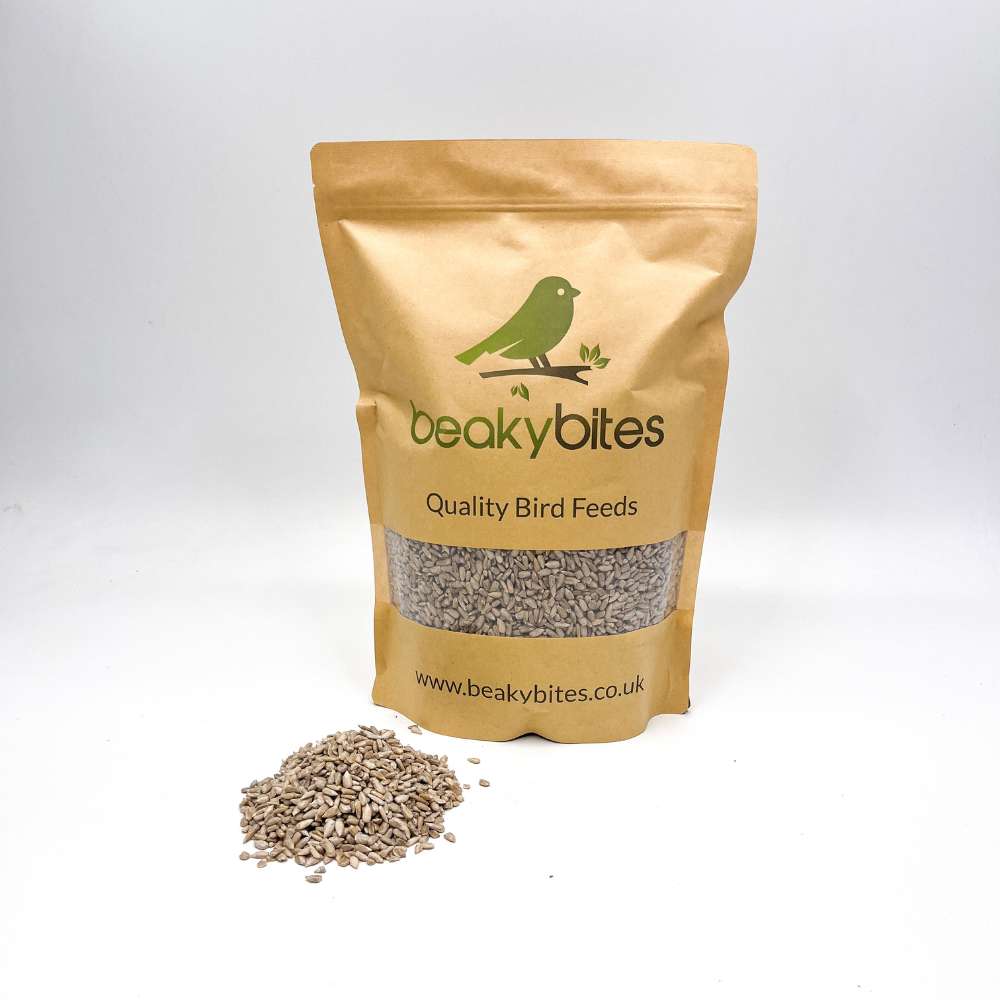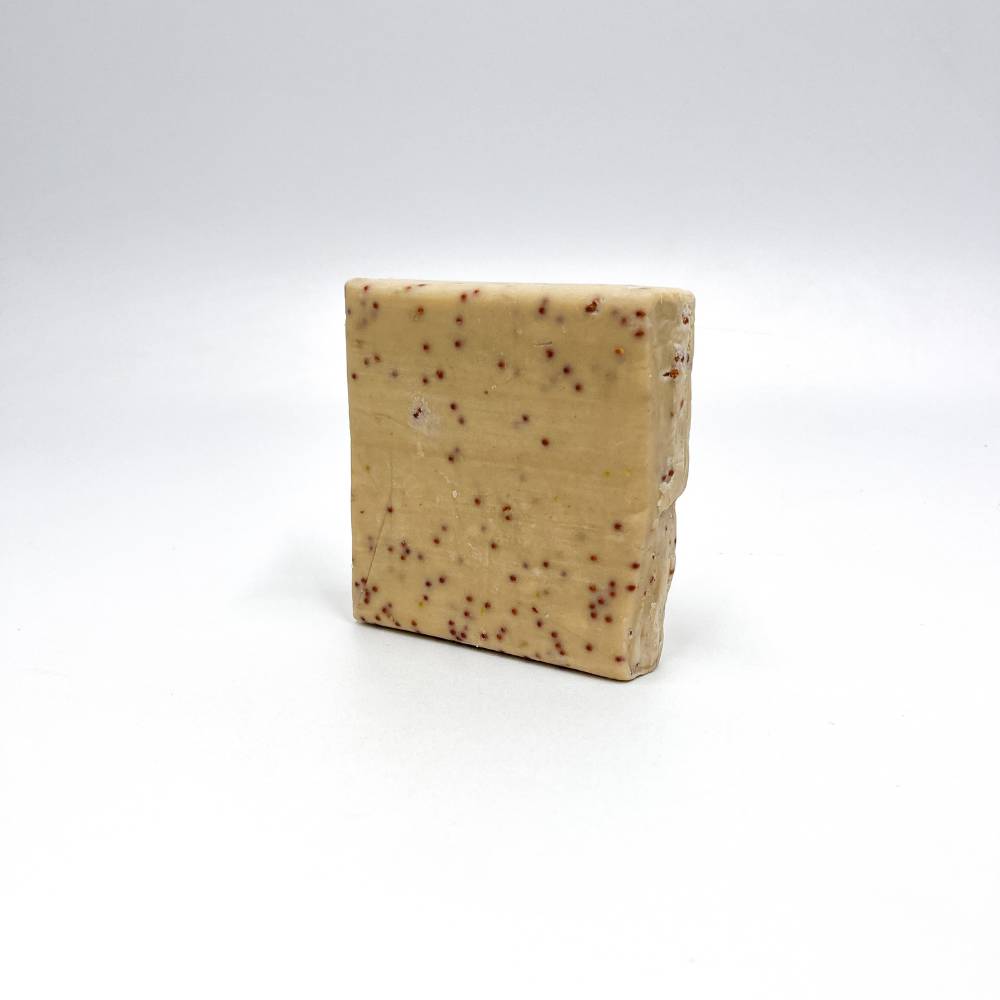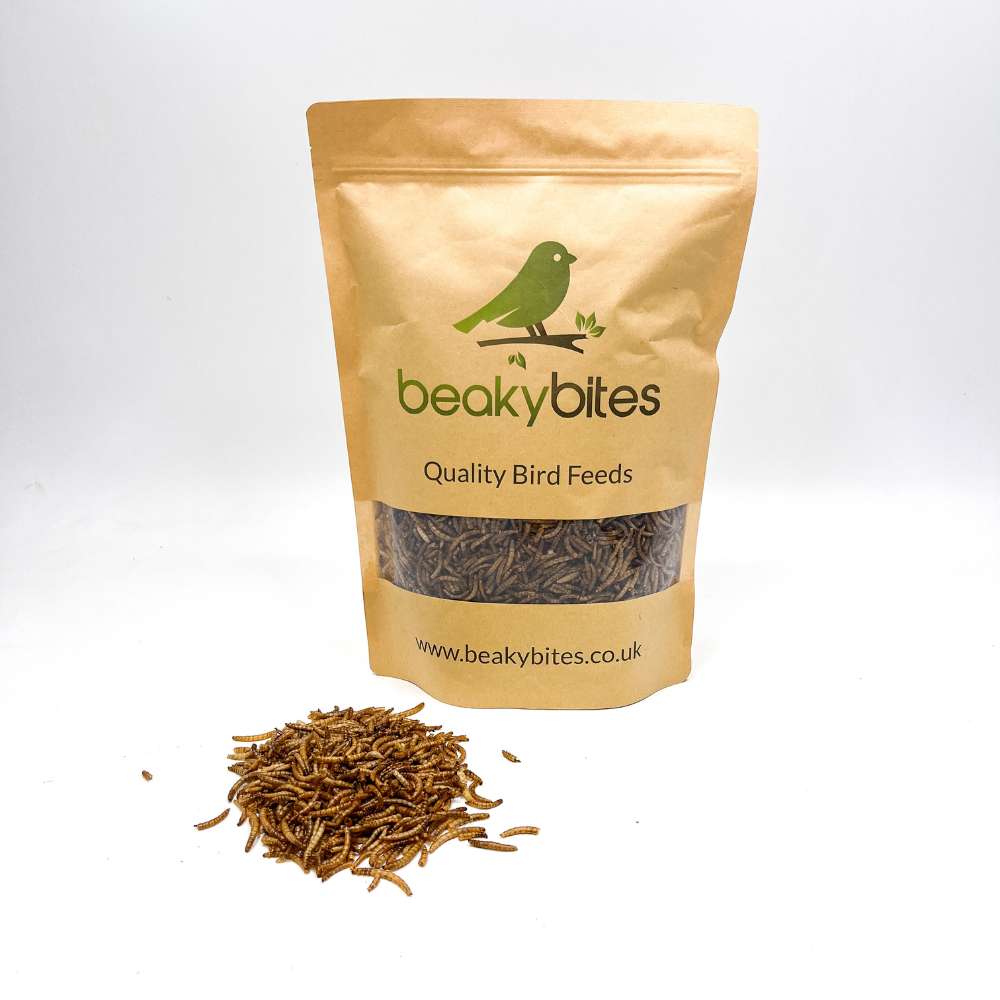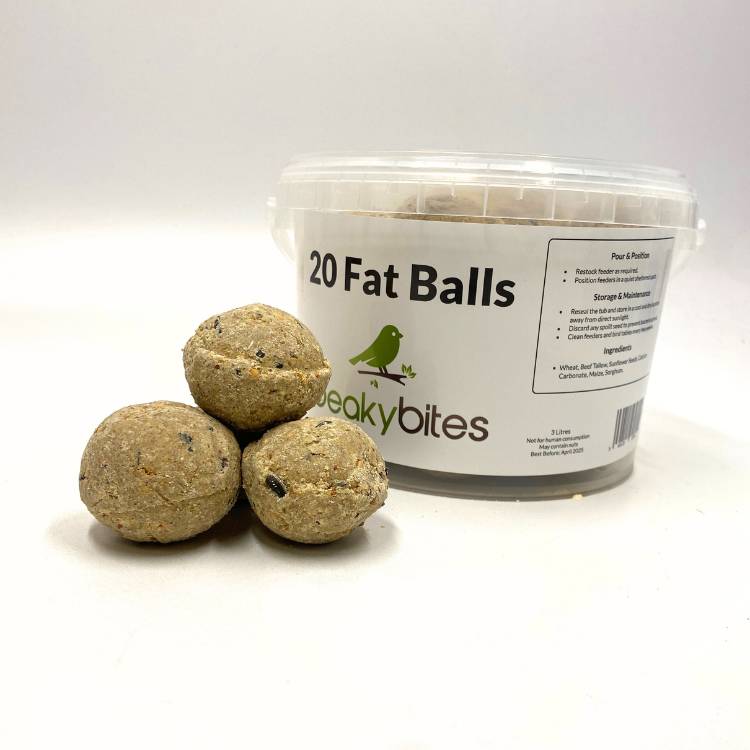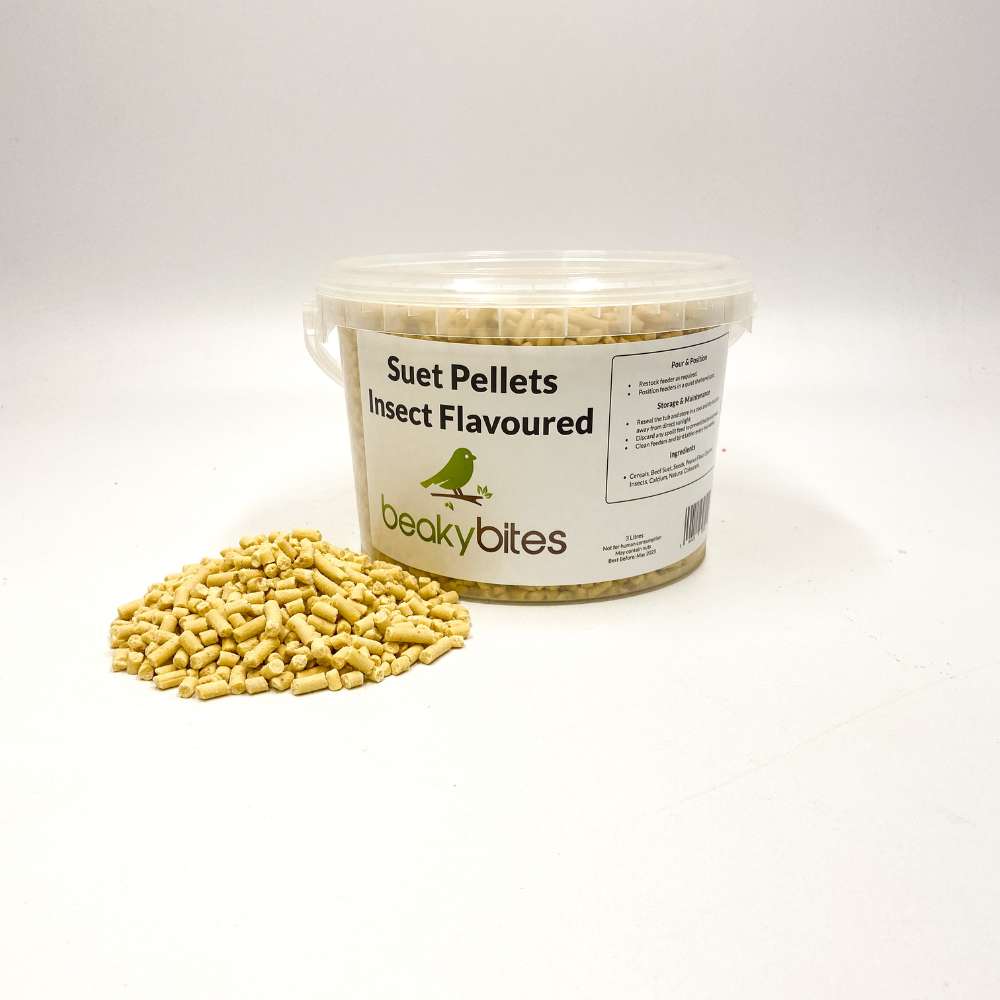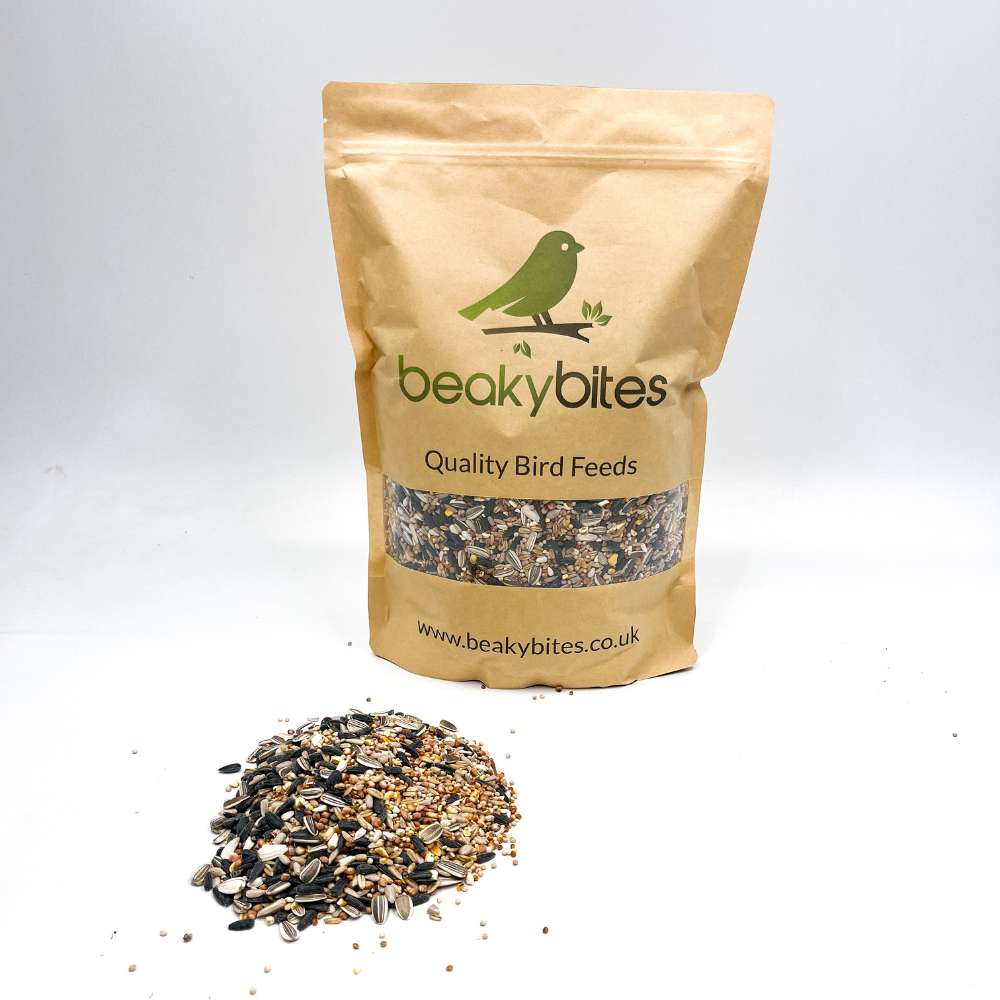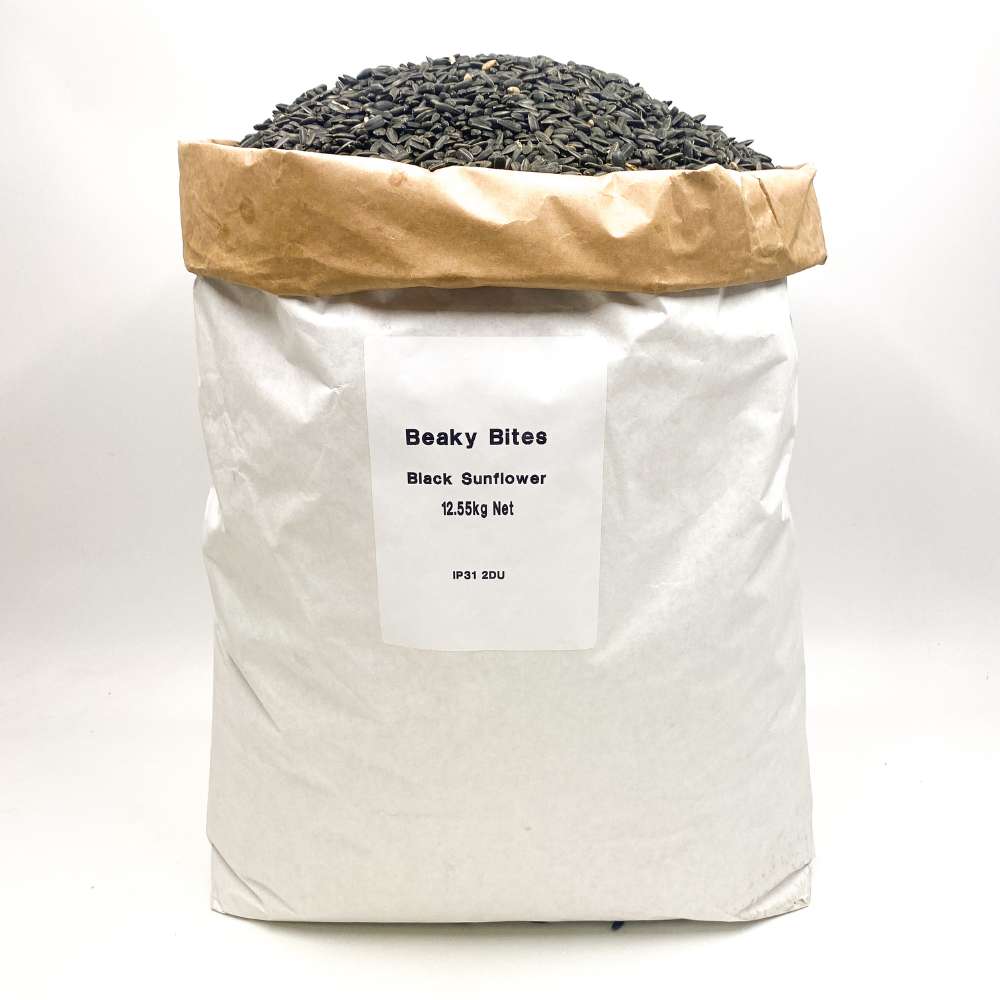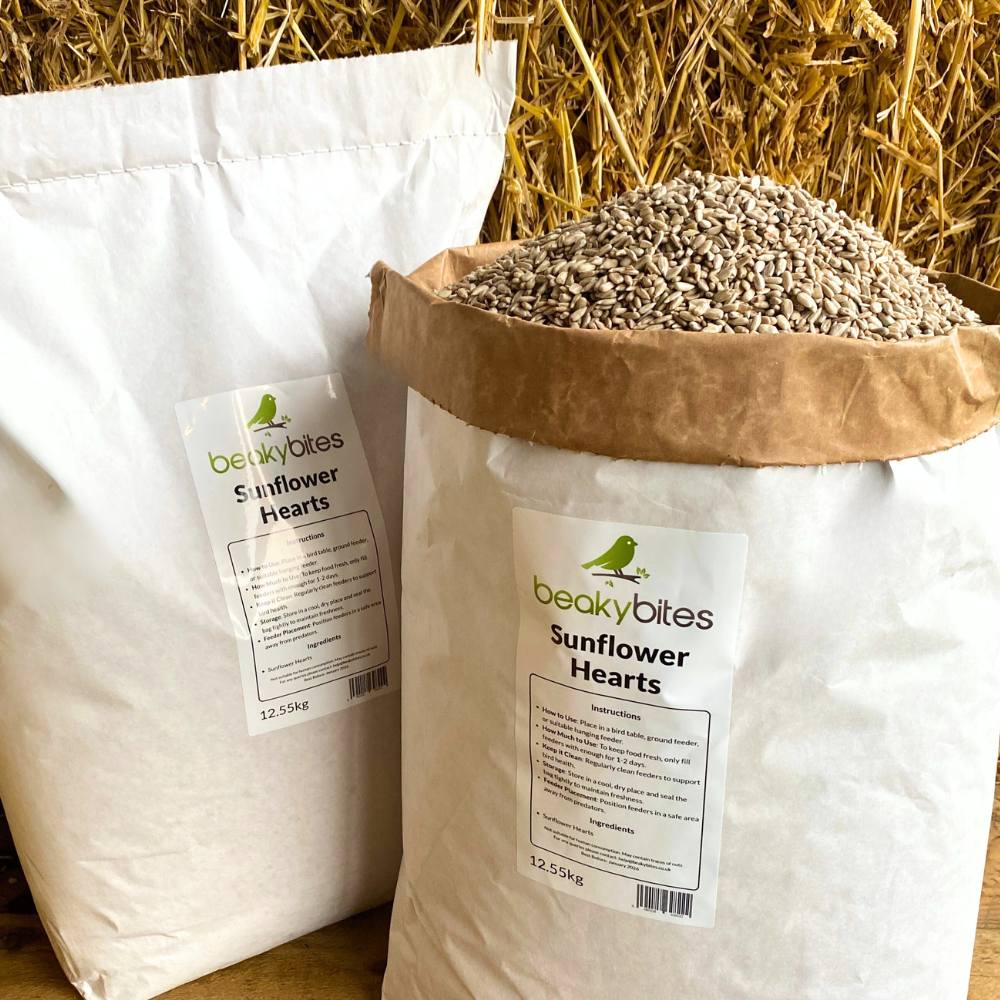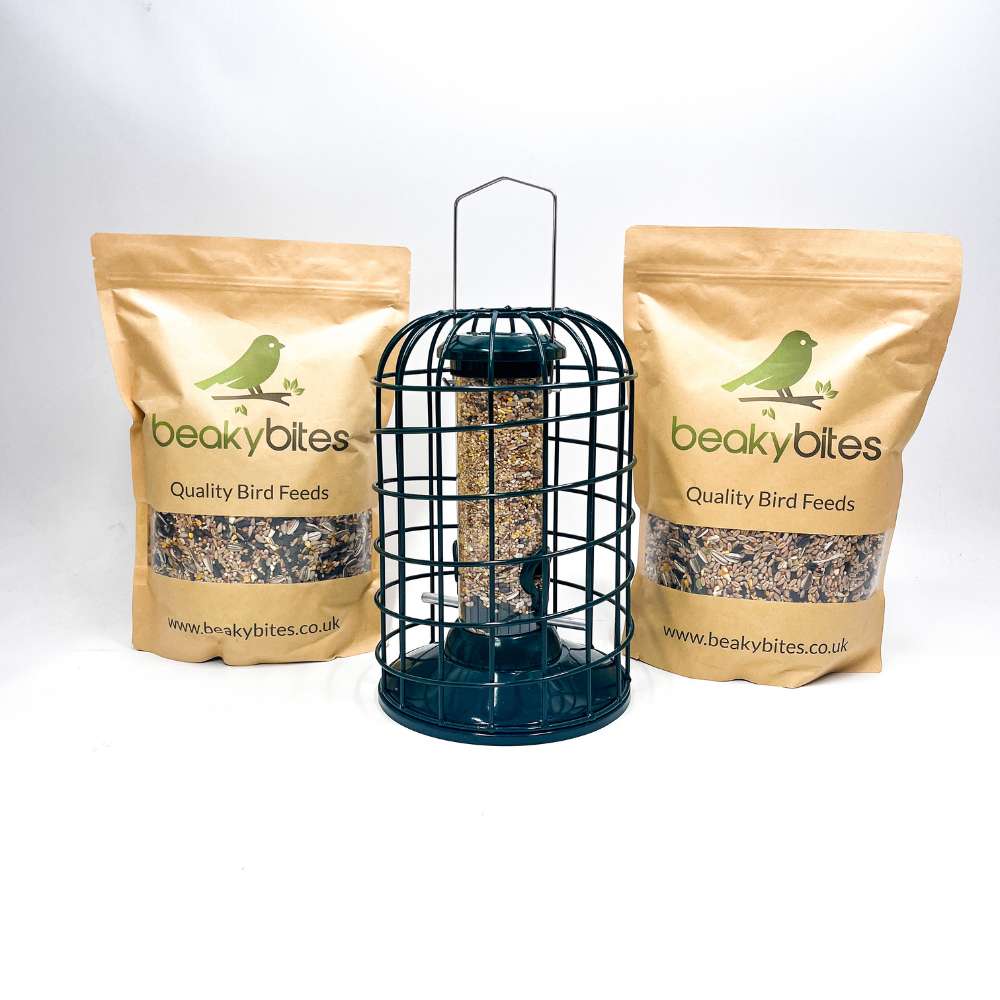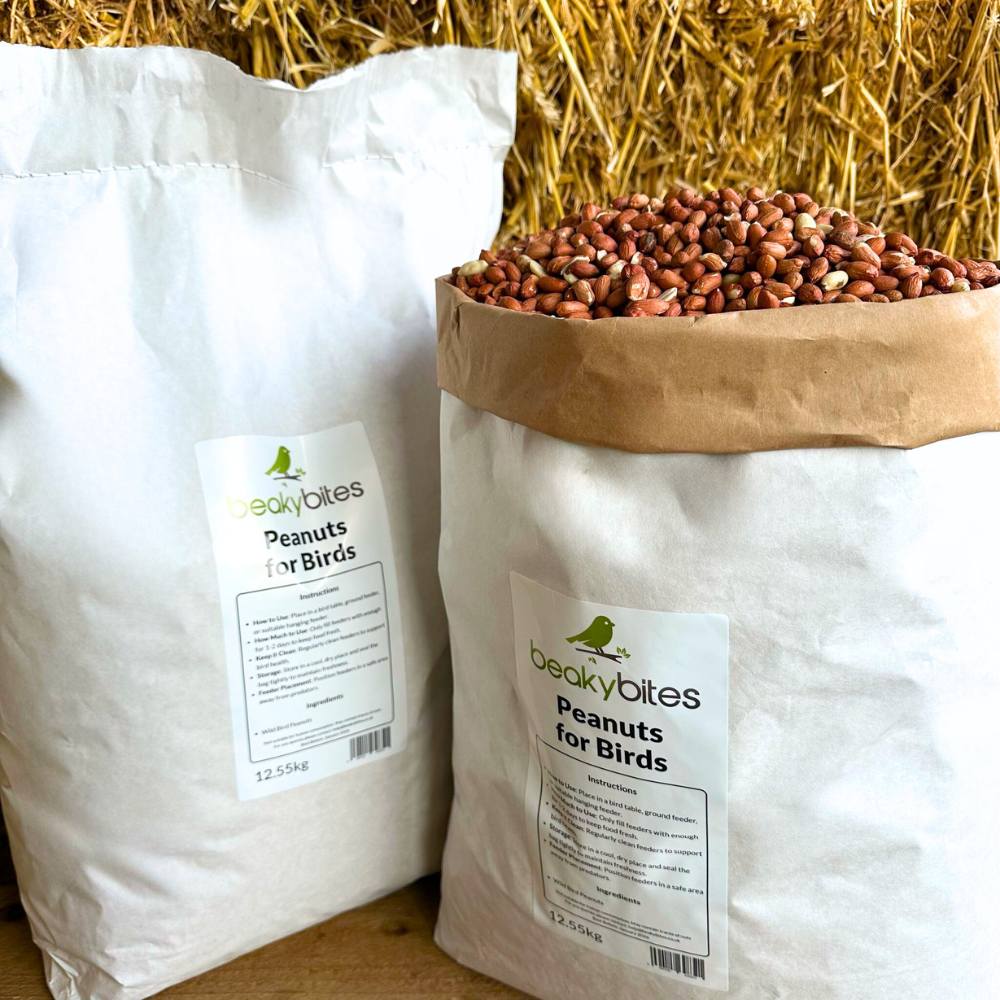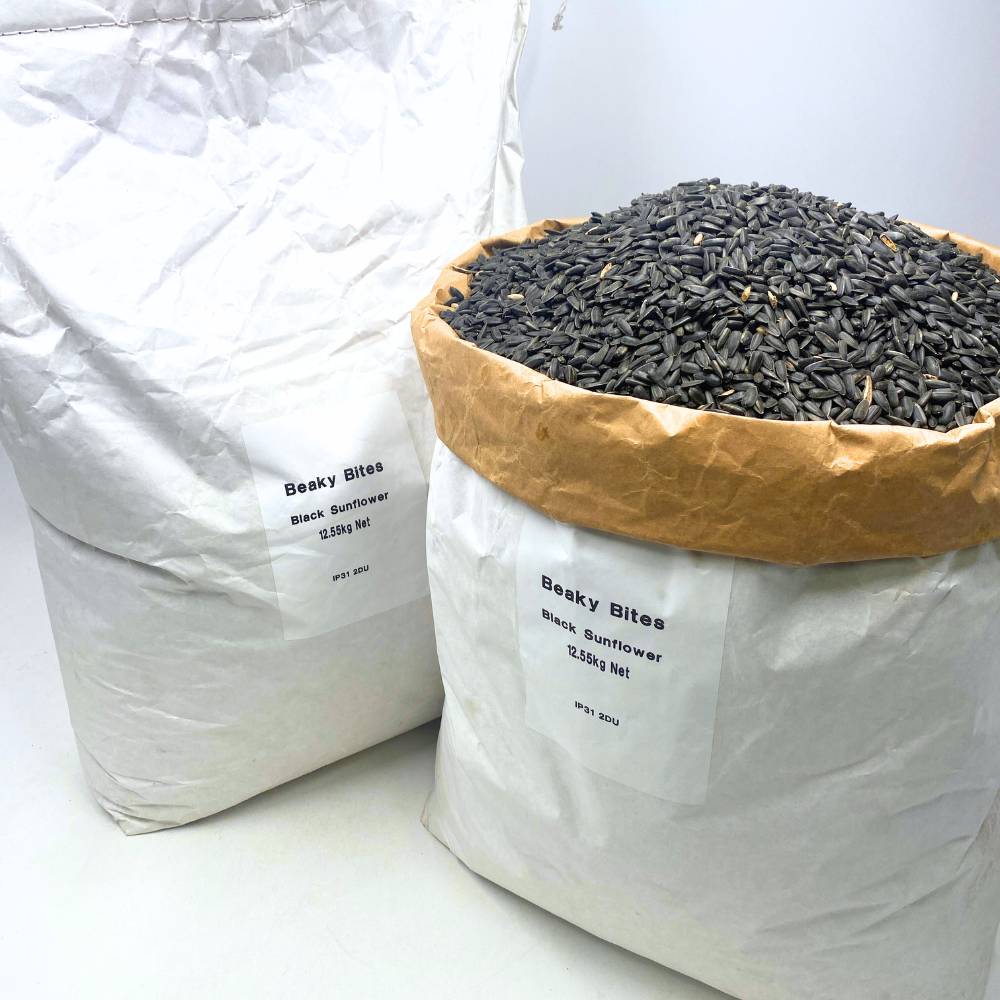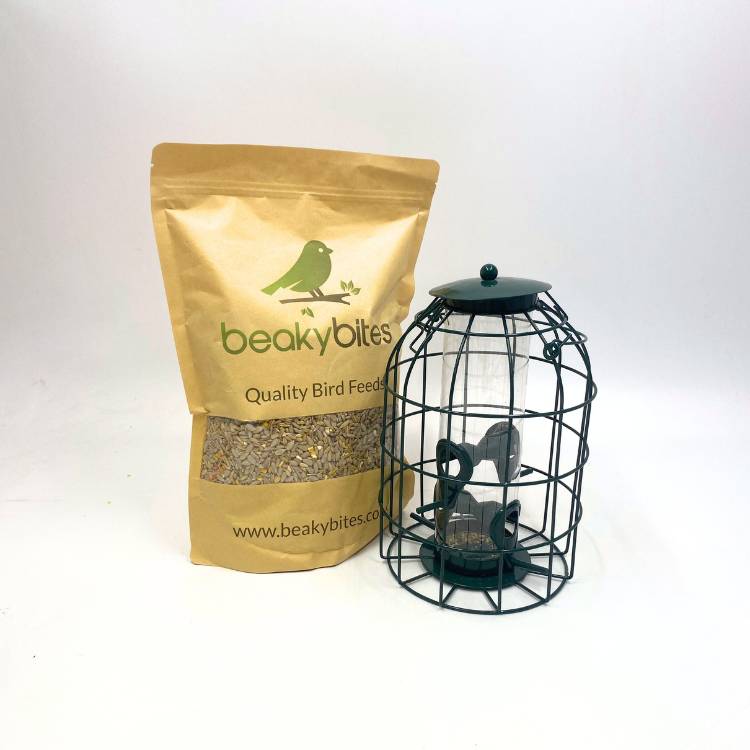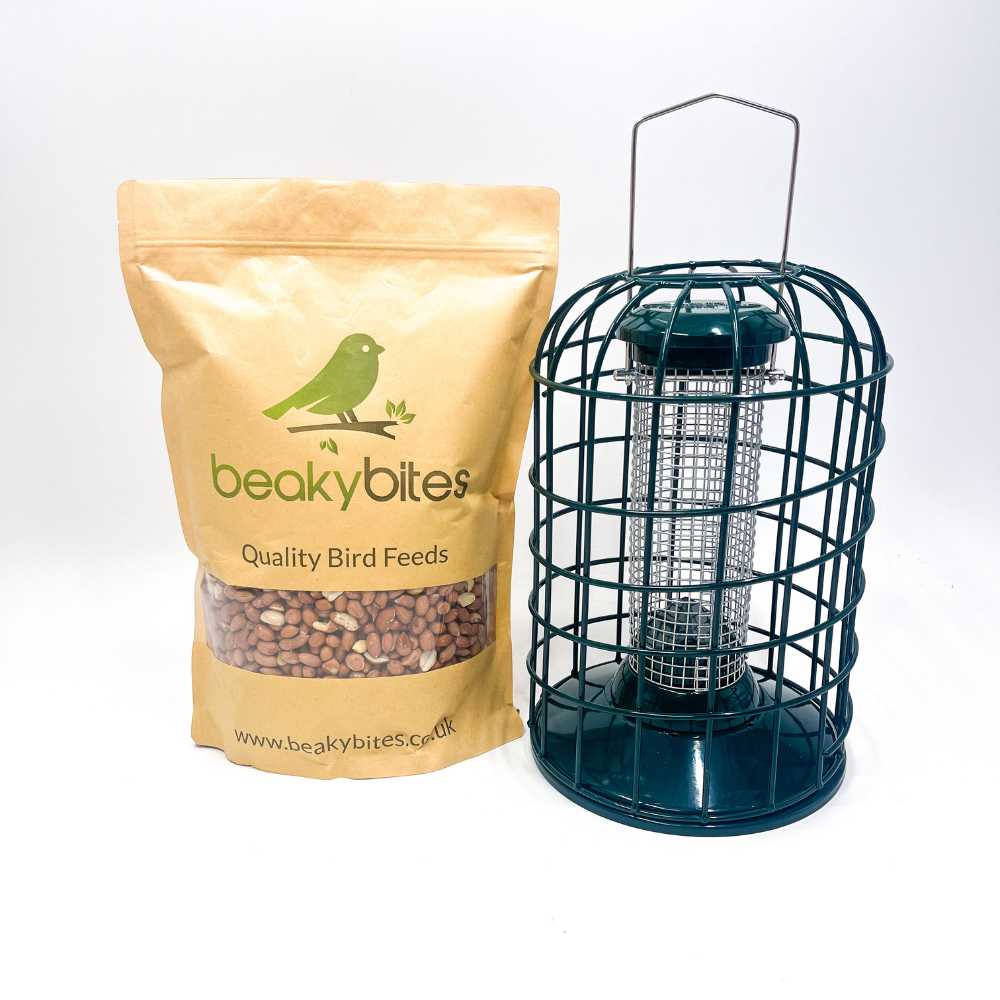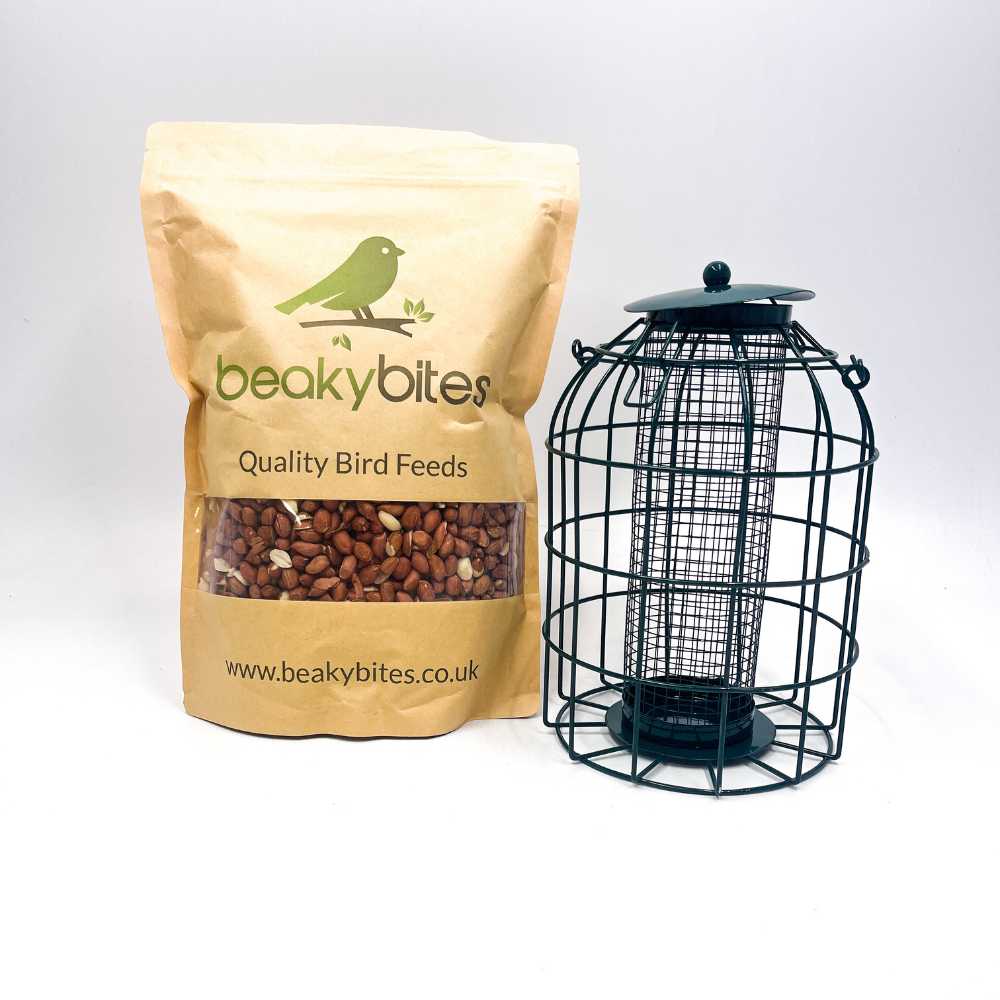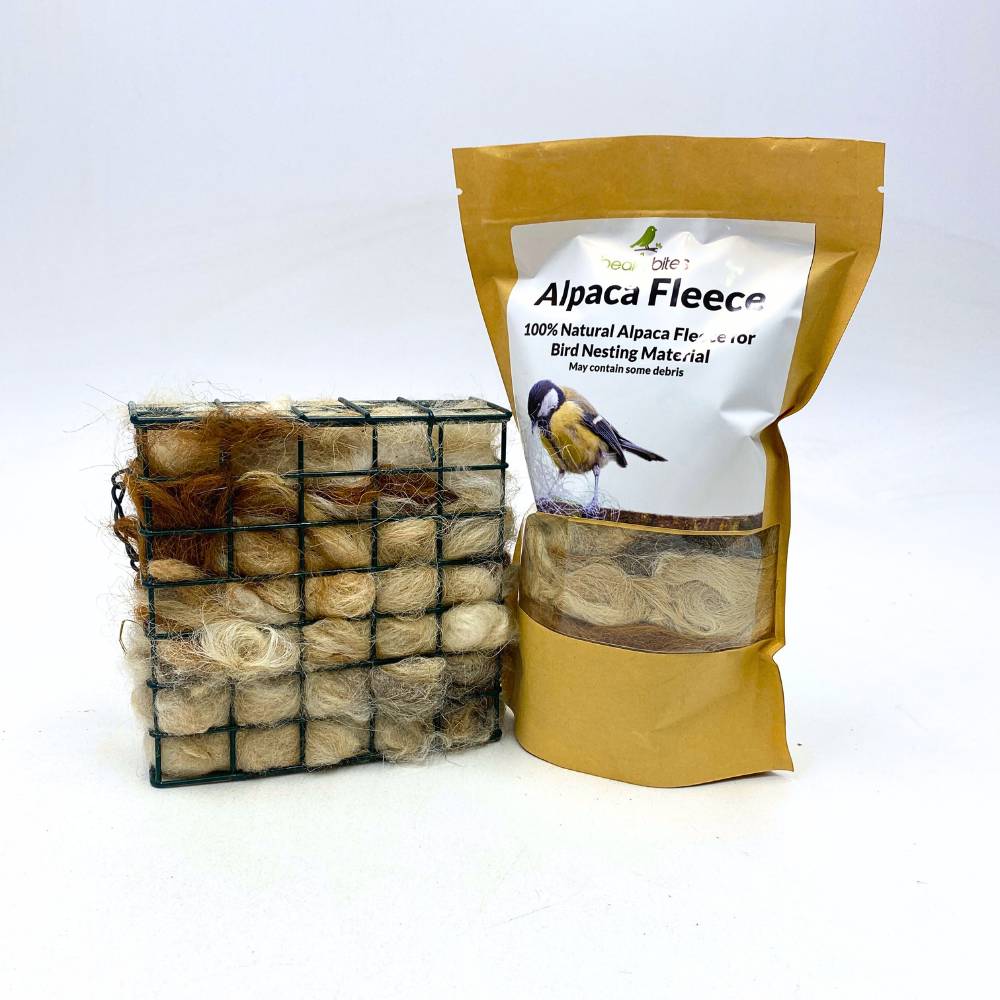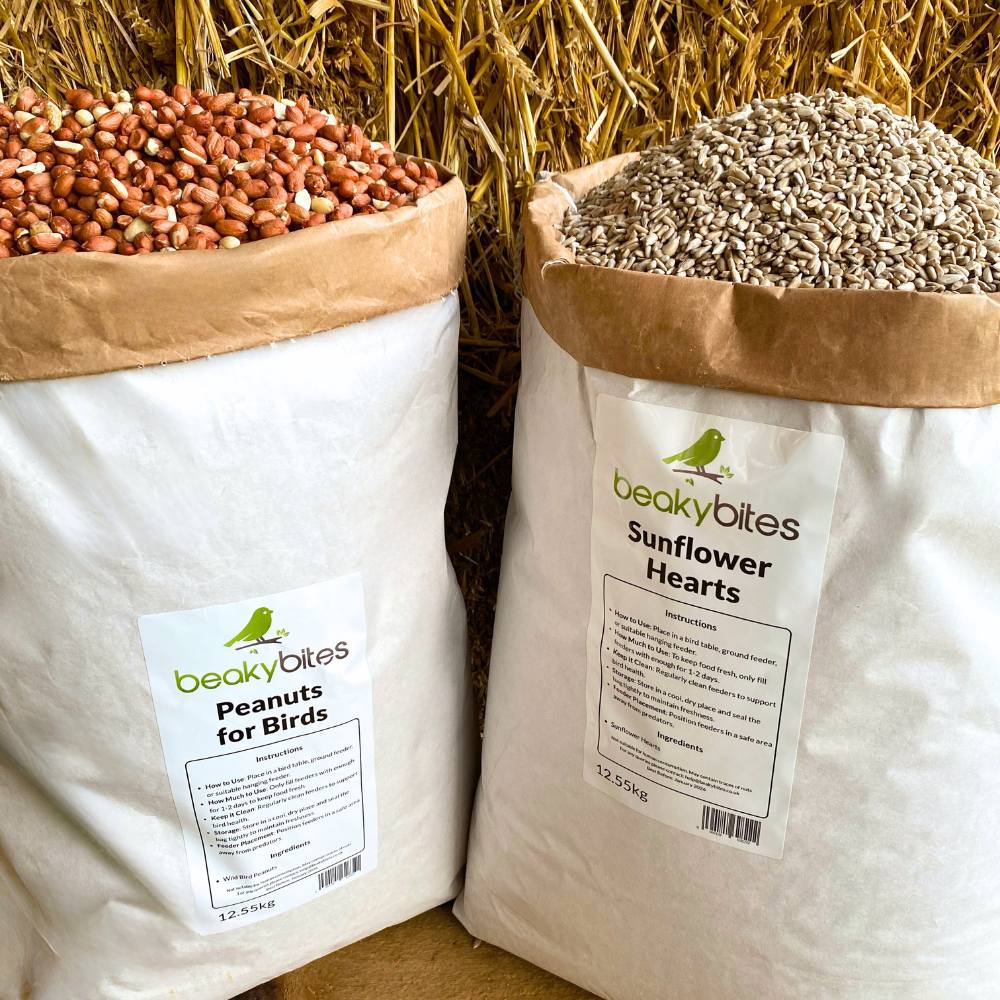Bird Fact File: Blue Tits

Welcome to our weekly bird guide series brought to you by Beaky Bites! Each week, we'll take a closer look at a beloved UK garden bird to help you better understand and appreciate these amazing birds. From identifying distinct features to discovering their favourite foods and nesting habits, this series aims to provide an overview of our feathered wildlife.
Let's Meet the Blue Tit
Blue Tit Fact File | |
|---|---|
| Size: | 12cm, head to tail |
| Wingspan: | 18cm |
| Weight: | 11g |
| Colours: | Blue, Yellow, White, Black, Grey, White and Green |
| Eggs: | 10-12 eggs per brood |
| Nesting: | A cup shaped nest, made from moss and dead leaves, then lined with feathers. |
| Population Status: | Stable |
Blue Tits are the most beautiful and recognisable birds in our gardens. With their bright colours and their silly antics they never fail to put a smile on your face. They’re a joy to watch flitting around trees and feeders, always on the move. The Latin for Blue tits is Cyanistes caeruleus and they are part of the Paridae or Tit family. There are approximately 3.3 million breeding pairs in the UK and 20-40 million across Europe.

Appearance and Behaviour
Spotting a Blue Tit is relatively easy thanks to their distinctive colours. Look for their bright blue cap, white cheeks, and yellow belly. Males and Females are coloured the same, with females being slightly paler. Juveniles start off with more brown and grey colour with a yellow chest, growing into those bright feathers as they mature.
They are small and agile often seen hopping from branch to branch or hanging upside down while searching for food, Blue Tits are a lively presence in any garden. Their call is a high pitched 'tsee-tsee-tsee,' which can help you locate them even if they’re hidden among the leaves.
Blue Tits are highly sociable and inquisitive birds. They are often seen in small groups, especially outside of the breeding season. During winter, they may join mixed species flocks to forage more effectively. And remember if you see 4 or 5 blue tits at your feeder, that could mean you are actually feeding up to 20 blue tits as they forage for their families.
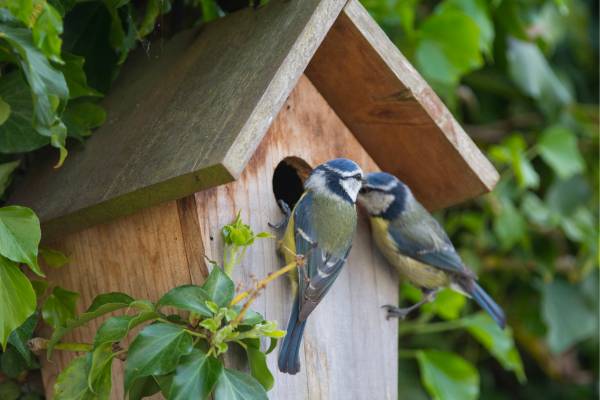
Where do Blue Tits Hang Out and Eat?
Blue Tits are common in woodlands, gardens, and parks across the UK. They love areas with plenty of trees and shrubs where they can find insects and caterpillars to eat. If you have a garden with some mature trees or a bird friendly hedgerow, you're likely to see these colourful visitors. They are well adapted to the UK landscape
Blue Tits have a varied diet that includes insects, nuts, and seeds. They are particularly fond of caterpillars, which are crucial for feeding their young. Try filling up your feeders with a mixture of sunflower seeds, peanuts, and suet products. They’re also known to enjoy suet cakes and dried mealworms.
Using a feeder with plenty of perching space is ideal as blue tits are know for their acrobats and are often found eating upside down.
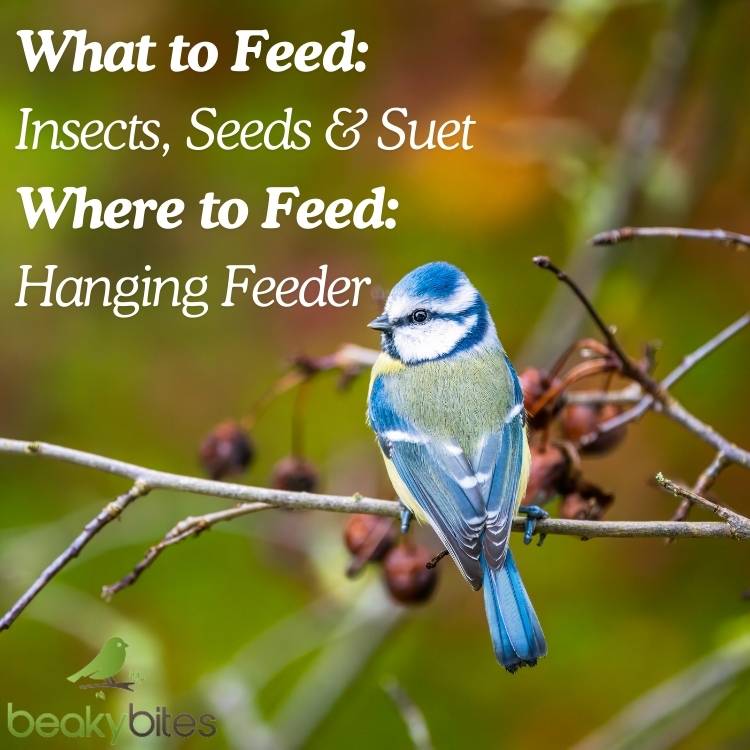
Blue Tits: Breeding and Nesting
Blue Tits start breeding in early spring. They nest in tree holes but will use nest boxes if provided.
Males will claim a territory before breeding and often hold the same area for a few years. This means closely packed nest boxes may only be used by one mating pair as the male will push away any neighbours.
The female will lay a large clutch of eggs 10-12 which will take 12-16 days to incubate under the female. Both parents will feed the chicks until they fledge 15-20 days from hatching. By late spring you may see young Blue Tits making their first flights around the garden. This is the critical period for Blue Tits as up to 20% will die in the first month from starvation. Keep your feeders well stocked with nutritious feed to support these fledglings.

Attracting Blue Tits to Your Garden
To make your garden a haven for Blue Tits, provide a variety of foods like peanuts, sunflower seeds, and suet.
Attracting blue tits to your garden is simple and there are many different steps you could take to do so. Firstly look at the plant life in your garden, consider planting native trees and shrubs. These will offer natural foraging for the birds as well places to get nesting material. Also consider a nest box, easily installed to a tree or side of a building, to promote a mating pair. Thirdly fresh water is key, yet often forgotten, it will make your garden more inviting for birds.
For blue tits, bird feed is varied as they are versatile and will eat a lot of bird feed products. Peanuts, sunflower hearts and mealworms are top choices. and to combine all these into a energy packed block, with our mixed flavours of suet cakes.
Conclusion
Blue Tits are a delightful addition to any garden, bringing colour, song, and an entertaining presence. By understanding their habits and needs, you can create a welcoming environment that supports these vibrant birds.
Whether you're a seasoned bird watcher or a newcomer to the hobby, enjoying the company of Blue Tits is a rewarding experience. Keep an eye out for next week's post, where we'll explore another amazing UK garden bird!
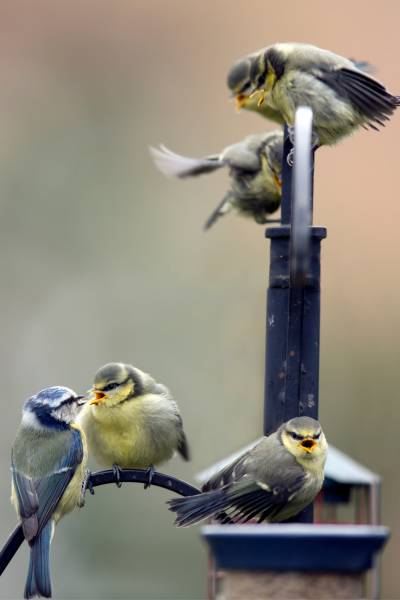
Frequently Asked Questions
What can I do to help Blue Tits during the winter?
- Answer: Provide high-energy foods like fat balls, suet, peanuts, and sunflower seeds, along with fresh water.
How can I encourage Blue Tits to use a nest box?
- Answer: Place the nest box in a quiet, sheltered spot about 2-4 meters off the ground, facing away from prevailing winds and direct sunlight.
What should I do if I find a baby Blue Tit on the ground?
- Answer: If it appears healthy, leave it be as it's likely learning to fly; if in danger, place it in a nearby bush or tree.
What type of food is best for attracting Blue Tits to my garden?
- Answer: Blue Tits are attracted to peanuts, sunflower seeds, mealworms, and fat balls.
How can I identify a male Blue Tit from a female?
- Answer: Male Blue Tits have brighter colours, especially on their blue caps and wings, while females are slightly duller.

